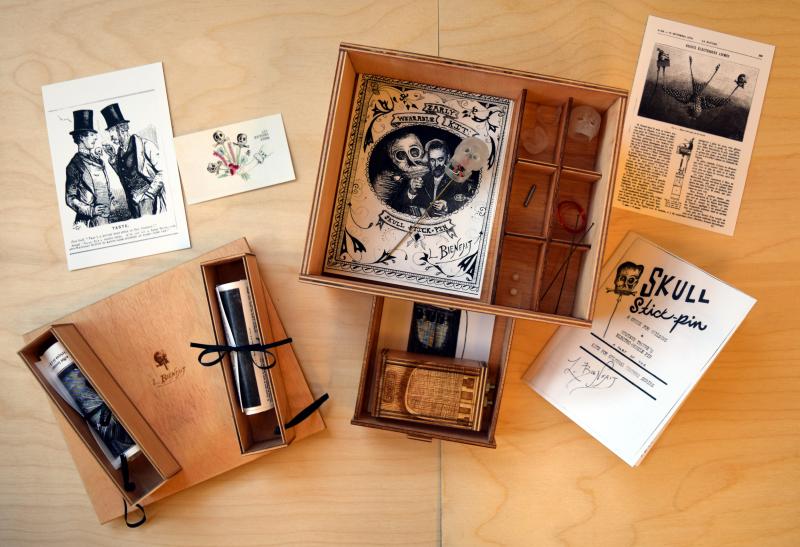Back from the grave: Maker Lab brings spooky 19th century skull to life

Just in time for Hallowe'en, the Maker Lab in the Humanities at the University of Victoria launched its first Kit for Cultural History, which reinvents a skull stick-pin from the 1860s. The kit is a tangible example of how the Maker Lab combines cultural research with digital fabrication and also of today’s thriving maker movement which involves DIY approaches. Unveiled at Rutgers University in New Jersey, the kit features the cravat pin introduced by French engineer Gustave Trouv&e#180; at an 1867 exhibition in Paris and now housed at the Victoria and Albert Museum in London, UK.
The kit itself comes in a wooden box made by the lab. It includes illustrations from the 1800s, instructions for assembling the cravat pin, and a history of the original “electric-mobile” skull, which was said to gnash its teeth and roll its eyes. To automate the skull, the wearer would flip a battery worn in their pocket. While it sounds fascinating, it may as well be fiction. Based on the team’s research, the lab questions whether the original pin ever functioned properly.
“The Maker Lab's research priority involves remaking technologies that no longer function, no longer exist, or may have only existed as fictions, illustrations or one-offs,” says Dr. Jentery Sayers, director of the lab, an assistant professor in the UVic Department of English and a faculty member of UVic’s Cultural, Social and Political Thought (CSPT) program. “The Kits for Cultural History project approaches cultural history seriously, but also resists taking history at face value.”
The Kits for Cultural History will be presented Nov. 20 at UVic (12:30 p.m. in room C116 of the David Strong Building). Physical copies of the kits are being sent to universities across North America, with plans for more public exhibits in 2016.
The Maker Lab is supported by funding from the Social Sciences and Humanities Research Council, Canada Foundation for Innovation and the British Columbia Knowledge Development Fund. With Sayers, Nina Belojevic, Tiffany Chan, Nicole Clouston, Katherine Goertz, Shaun Macpherson, Kaitlynn McQueston, Danielle Morgan and Victoria Murawski contributed to the first Kit for Cultural History.

